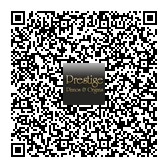The Basics of Sheet Music (Melbourne)

Sheet Music is a codified and printed form of music. The most common example of the same is the open musical sheet that is made of white paper and printed in black that is in front of the grand piano in which musical notes are handwritten or printed. This article will discuss some of the more basic concepts relevant to sheet music Melbourne.
Sheet Music: Purpose
Musical compositions are complex pieces that need to be compiled and codified much like a written treatise. This is because much like scholarly books and authors, the final composition maybe enough to allow the musician to play the piece but a thorough understanding of the thought process as well as the earlier sketches of the composer can provide more information about how a piece should be performed or how it should sound like.
Sheet Music Melbourne: Types
Sheet music can be composed as a single piece that incorporates different instruments as well as the voice talent. This is called the "score". It can also be segregated and then distributed to each person who will play or sing the same. This is otherwise known as a "part".
The rationale behind both types is simple, the score is given to the conductor who will guide each and every musician while the latter is given to the "players" in order for them to memorize and take to hear their own tasks. Of course one is allowed to look into the main score in order to get a feel for the composition as a whole.
Click Here to Find Out Great Range of Print Music
Sheet Music Melbourne: Education
Musicians are thought to read musical scores or sheet music much like a lawyer is required to read case law. However, history is replete with musical geniuses who do not know how to read a score but can compose music thru the use of their own system. Of course the sheet music is also a necessity in order to play some compositions but some musicians can, to a certain extent, play a composition by ear.
Sheet Music Melbourne: Current Developments
This is the digital and internet age. This means that nowadays, sheet music can be read directly from an electronic device like a tablet pc. Classical works are also kept in digital format. OCR technology allows the sheet music to be scanned and then manipulated. Conversion of one part played on one instrument into another has also become a trend thru OCR technology. This technology has been available as early as the 1990's. It is also important to note that a public domain for sheet music is available via different providers or organizations (i.e. Project Gutenberg, Mutopia Project, International Music Score Library Project, etc.).








